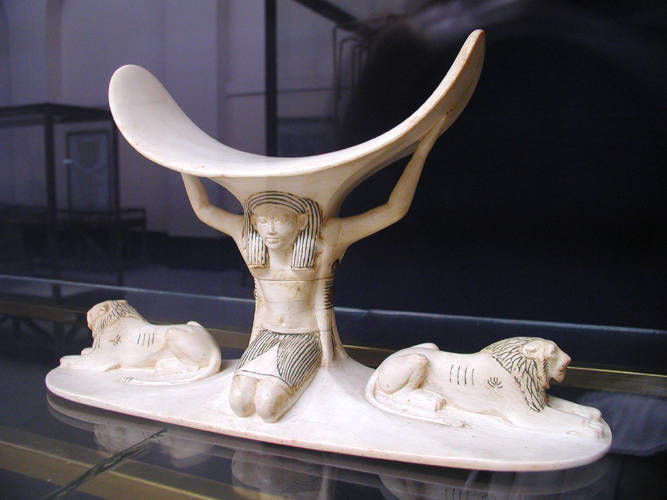
Photo source: Wikipedia
Headrest of Tutankhamun
Finely carved, engraved, and painted ivory(?)
Egyptian Museum, Cairo.

Photo source: Wikipedia |
Headrest of TutankhamunFinely carved, engraved, and painted ivory(?)
|
Be that as it may, the central figure in this photograph is Shu, holding the sky above his head. Looped over each of his shoulders, and extending to the ground although barely visible in this photo, is the hieroglyphic sign for "protection". Two couchant lions, carved in the round, guard the sleeping pharaoh. Together, the lions and horizontal represent the hieroglyph "horizon" from which the sun rises. Read more, from Touregypt.net.
Shu was the god of air. According to legend he brought chaos to an end, at the creation of the universe, by raising the sky (his daughter Nut) high above the earth (his son Geb). It was an action that had to be maintained continuously, because failure to do so would result in the fall of the sky and a return to chaos. Therefore, as he rests his head and neck upon this object, Tutankhamun identifies with the sky, who is separated every night by Shu from the earth as he sleeps.

|

|

|